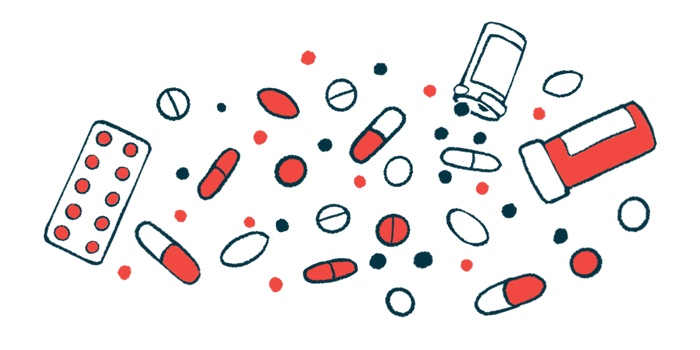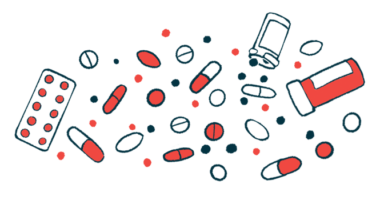Adding Omega-3 or Vitamin D Helps Treat VOCs in Children: Cost Analysis
Benefits found to outweigh costs of adding supplements to standard SCD therapy

Adding omega-3 or vitamin D supplements boosts the therapeutic effectiveness of standard of care therapy for sickle cell disease (SCD) children with vaso-occlusive crises (VOCs), a recent study shows.
Omega-3 supplements reduced the number and severity of VOCs, while vitamin D lessened their severity only. Supplementation also reduced the number of days spent in the hospital, but were associated with a slight increase in medical costs.
“The knowledge gained in this study could have significant implications on policy, clinical decision-making, and the cost of treatment for VOC painful crises in pediatric patients with SCD,” researchers wrote. “Policymakers and clinicians should adopt the interventions to improve outcomes for this patient population.”
The study, “Cost-effectiveness analysis of adding omega-3 or vitamin D supplementation to standard therapy in treating painful crises of pediatric sickle cell disease patients,” was published in the journal European Review for Medical and Pharmacological Sciences.
$1.1 billion a year is spent in the U.S. to manage painful crises
VOCs, a hallmark feature of SCD, are characterized by chronic inflammation and severe pain due to blocked blood vessels. VOCs are the most common reason for emergency room visits and hospitalizations for people diagnosed with sickle cell disease.
Treatment of VOCs involves high costs and healthcare resources. In the U.S., $1.1 billion a year is spent in the management of painful crises, with a monthly average cost of $1,389 for patients.
Hydroxyurea was approved in the U.S. in 1998 to treat adults with SCD, and remains to this day the primary disease-modifying therapy in people with the condition. However, it is linked to side effects and high costs. Specifically, treatment with hydroxyurea plus folic acid, and non-steroidal anti-inflammatory drugs is estimated to reach $20,128 in the first year of treatment.
Alternative agents with a different mode of action, including those targeting inflammation, are currently being investigated for lessening VOCs. Previous clinical studies have shown that omega-3 supplements, an essential type of fat that reduces inflammation, and vitamin D, a fat-soluble vitamin that regulates calcium and phosphate levels, had clinical benefits in SCD patients.
SCD children with low vitamin D levels are hospitalized more frequently due to pain crises, according to a previous study.
adding vitamin D or omega-3 to standard therapy increases overall effectiveness with slight cost increases compared to the standard treatment alone
Researchers conduct cost-effectiveness analysis involving 165 children with SCD
However, few studies have assessed “the cost-effectiveness of omega-3 and vitamin D supplementation to the standard therapy in treating painful crises among children with SCD,” the researchers wrote.
To answer this, a team led by researchers in Egypt and the U.S. compared the costs and effectiveness of standard therapy (hydroxyurea, folic acid, and ibuprofen) alone versus the combination with either omega-3 or vitamin D supplements to treat VOCs in a population of children and adolescents with SCD.
They conducted a cost-effectiveness analysis based on a prospective 10-month study that randomly assigned 165 SCD patients (ages 7–18 years) to three daily treatment groups: standard therapy alone (control group), or combined with either omega-3 or vitamin D supplements.
Those in the omega-3 group received 300–400 mg of eicosapentaenoic acid (EPA) and 200–300 mg of docosahexaenoic acid (DHA), two different types of omega-3 fats. In the vitamin D group, participants received 1,500–3,500 international units, according to their vitamin D deficiency levels.
Standard treatment included hydroxyurea (20 mg/kg/day, up to a maximum daily dose of 40 mg/kg) and folic acid (0.5–1 mg/day), given for three to four weeks until they responded. The painkiller ibuprofen was provided as needed, at a maximum initial dose of 5 mg/kg.
The cost-effectiveness analysis was based on data from 150 patients distributed equally between the groups (50 in each group).
Results showed that adding omega-3 or vitamin D to standard of care was linked to a higher use of healthcare resources compared with the control group. Nevertheless, the therapeutic effectiveness of both supplements was higher compared with standard therapy alone.
Specifically, omega-3 supplements led to a significant mean reduction of 45% in the number of VOC episodes compared with standard treatment alone (reduction of 30%). Vitamin D supplements had no added benefit (reduction of 31%).
VOC severity was significantly lessened in both supplement groups: by 50% in the omega-3 group and by 33% in the vitamin D group compared with the control group. The mean number of days spent in the hospital also were fewer in the supplement groups (one day in the omega-3 group and two days in the vitamin D group) than in the control group (three days).
However, the costs associated with the addition of omega-3 and vitamin-D were significantly higher compared with standard therapy alone. The mean monthly cost of omega-3 supplementation was 1,700 Egyptian pounds (EGP; around $68), and vitamin D was 1,100 EGP (around $44) versus 881.25 EGP (around $35) for standard therapy alone.
This also translated to a higher average cost-effectiveness ratio (ACER), a measure of the net cost divided by changes in health outcomes in reducing the number of painful crises. The ACER for supplementation with omega-3 represented a cost of 37,778 EGP (around $1,525) and vitamin D 35,484 EGP (around $1,432), while standard therapy alone was at 29,375 EGP (around $1,186).
“Both interventions were significantly costly compared to the control group,” the researchers wrote.
Omega-3 supplementation was the most cost-effective for the reduction of in-hospital days, with a mean cost of 25,487 EGP ($1,029).
Next, to account for the additional costs of supplements, the researchers estimated the incremental cost-effectiveness ratio (ICER) that corresponds to the difference in costs divided by the difference in outcomes.
The ICER value of omega-3 supplements was 5,458 EGP (around $220) for a 15% extra effectiveness in reducing the number of VOC episodes compared with standard treatment alone.
Considering the severity of painful crises, omega-3 supplements led to 17% additional effectiveness compared with vitamin D supplements. These additional benefits were linked to a mean ICER of 3,529 EGP (around $142).
Vitamin D supplements led to 5% additional effectiveness compared with standard therapy, with an ICER of 4,375 EGP (around $176).
Overall, while therapeutic management of VOCs in SCD patients is costly, these findings suggest that “adding vitamin D or omega-3 to standard therapy increases overall effectiveness with slight cost increases compared to the standard treatment alone,” the researchers wrote.








